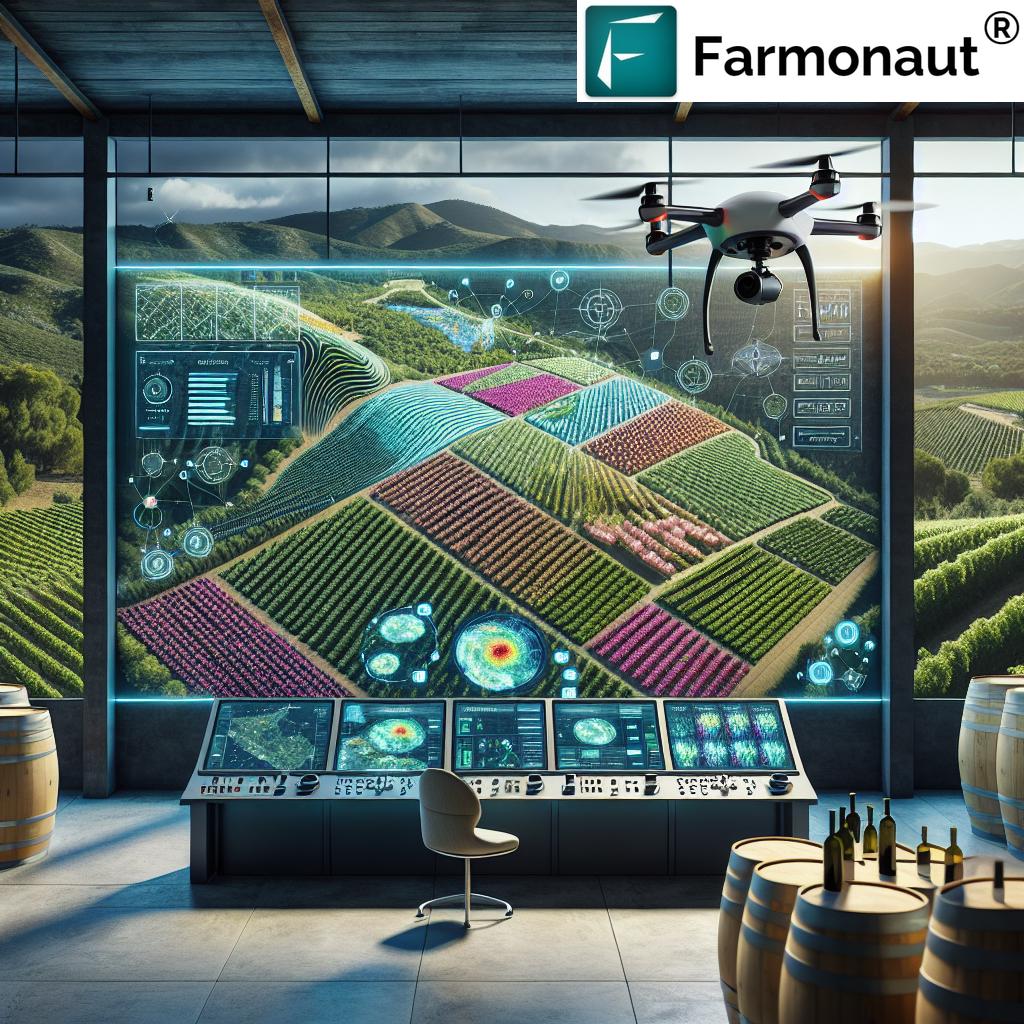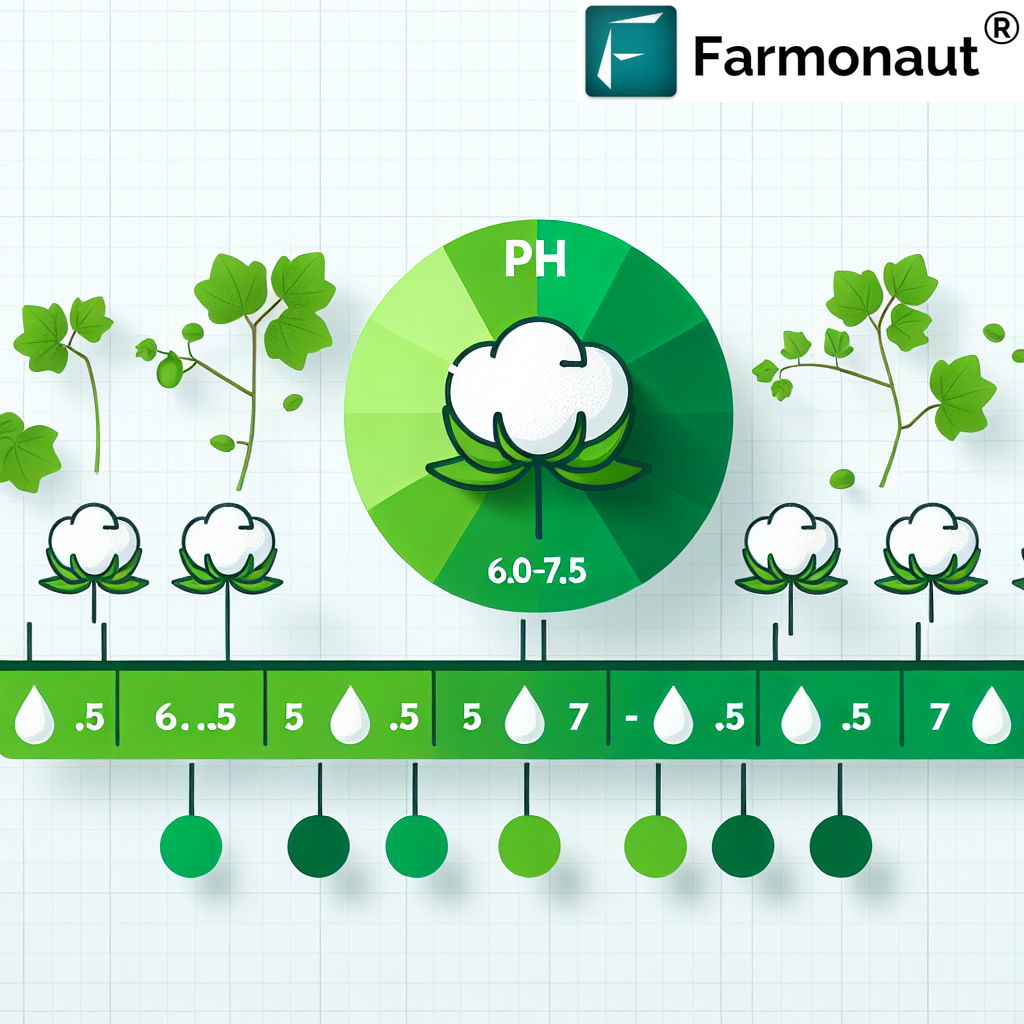Combating Green, Pomegranate, and Rose Semiloopers: Expert Guide for Farmers

As agricultural technology experts at Farmonaut, we understand the challenges farmers face when dealing with pests like semiloopers. In this comprehensive guide, we’ll explore the world of green semiloopers, pomegranate semiloopers, and rose semiloopers, providing you with valuable insights and strategies to protect your crops effectively.
Understanding Semiloopers: A Threat to Agriculture
Semiloopers are a group of caterpillars belonging to the family Noctuidae. These pests are known for their distinctive “looping” movement, which gives them their name. While there are many species of semiloopers, we’ll focus on three particularly troublesome varieties: the green semilooper, pomegranate semilooper, and rose semilooper.
1. Green Semilooper (Chrysodeixis acuta)
The green semilooper is a common pest that affects a wide range of crops, including:
- Soybeans
- Cotton
- Sunflowers
- Vegetables (e.g., tomatoes, cabbage, cauliflower)
These caterpillars are characterized by their bright green color and slender bodies. They can cause significant damage to crops by feeding on leaves, flowers, and developing fruits.
2. Pomegranate Semilooper (Achaea janata)
The pomegranate semilooper is a serious pest of pomegranate orchards. These caterpillars are known for their voracious appetite and can quickly defoliate trees if left unchecked. They also attack other fruit trees and crops, including:
- Citrus
- Guava
- Castor
- Cotton
3. Rose Semilooper (Achaea janata)
The rose semilooper, despite its name, is not limited to attacking roses. This versatile pest can be found on various plants, including:
- Roses
- Ornamental plants
- Fruit trees
- Vegetables
Like its counterparts, the rose semilooper can cause extensive damage to leaves and flowers, impacting both the aesthetic value and productivity of affected plants.
The Impact of Semiloopers on Crop Health and Yield
Semiloopers pose a significant threat to crop health and yield. Their feeding habits can lead to:
- Reduced photosynthetic capacity due to leaf damage
- Stunted growth in young plants
- Decreased fruit quality and quantity
- Increased susceptibility to secondary infections
At Farmonaut, we recognize the importance of early detection and effective management of these pests. Our satellite-based crop health monitoring system can help farmers identify potential semilooper infestations before they become severe.
Leveraging Technology for Semilooper Detection and Management
Modern agriculture requires modern solutions. At Farmonaut, we’ve developed cutting-edge technologies to help farmers combat pests like semiloopers more effectively.
Satellite-Based Crop Health Monitoring
Our advanced satellite imagery analysis can detect changes in crop health that may indicate a semilooper infestation. By providing regular updates on vegetation health indices (NDVI), we enable farmers to:
- Identify potential problem areas early
- Target pest control efforts more precisely
- Reduce overall pesticide use
- Minimize crop damage and yield losses
To learn more about our satellite-based monitoring system, visit Farmonaut’s Crop Monitoring Platform.
AI-Powered Advisory System
Our Jeevn AI advisory system integrates satellite data with weather forecasts and expert knowledge to provide personalized recommendations for managing semilooper infestations. This system can help farmers:
- Predict potential outbreaks based on environmental conditions
- Receive timely alerts for pest control interventions
- Access expert advice on integrated pest management strategies
Comparison: Farmonaut Satellite System vs. Drone and IoT-Based Monitoring
| Feature | Farmonaut Satellite System | Drone-Based Monitoring | IoT-Based Monitoring |
|---|---|---|---|
| Coverage Area | Large-scale (entire farms) | Limited (flight restrictions) | Limited (sensor placement) |
| Frequency of Updates | Regular (every few days) | As needed (manual flights) | Continuous (real-time) |
| Initial Investment | Low (subscription-based) | High (equipment costs) | High (sensors and infrastructure) |
| Ease of Use | High (web and mobile apps) | Moderate (requires training) | Moderate (setup and maintenance) |
| Data Analysis | Advanced (AI-powered) | Varies (depends on software) | Basic to advanced |
| Scalability | Highly scalable | Limited scalability | Moderately scalable |
As you can see, our satellite-based system offers numerous advantages over traditional monitoring methods, especially when it comes to large-scale pest management like semilooper infestations.
Integrated Pest Management Strategies for Semiloopers
At Farmonaut, we advocate for an integrated pest management (IPM) approach to control semilooper populations. This strategy combines various methods to minimize pesticide use while effectively managing pest populations. Here are some key components of an IPM strategy for semiloopers:
1. Cultural Control
- Crop rotation to break pest life cycles
- Proper field sanitation to remove potential breeding sites
- Timely planting and harvesting to avoid peak pest populations
- Intercropping with pest-repellent plants
2. Biological Control
Encouraging natural predators and parasitoids can help keep semilooper populations in check. Some effective biological control agents include:
- Parasitic wasps (e.g., Trichogramma spp.)
- Predatory bugs (e.g., Chrysoperla carnea)
- Entomopathogenic fungi (e.g., Beauveria bassiana)
- Bacillus thuringiensis (Bt) based biopesticides
3. Mechanical Control
- Hand-picking of caterpillars in small-scale operations
- Use of light traps to attract and capture adult moths
- Installation of pheromone traps for monitoring and mass trapping
4. Chemical Control
While we emphasize minimizing chemical use, targeted application of pesticides may be necessary in severe infestations. Some options include:
- Neem-based insecticides
- Spinosad
- Chlorantraniliprole
- Flubendiamide
Note: Always follow local regulations and guidelines when using chemical pesticides.
Crop-Specific Strategies for Semilooper Management
Managing Green Semiloopers in Soybean and Cotton
Green semiloopers can be particularly problematic in soybean and cotton crops. Here are some specific strategies for these crops:
- Monitor fields regularly using our satellite-based crop health monitoring system
- Set up pheromone traps to detect adult moth populations
- Apply Bt-based biopesticides at the early instar stage
- Consider releasing Trichogramma parasitoids for egg control
- Use neem oil sprays as a repellent and growth regulator
Controlling Pomegranate Semiloopers in Orchards
Pomegranate semiloopers require a tailored approach due to the perennial nature of the crop:
- Implement proper pruning and canopy management to improve air circulation
- Use fruit bagging techniques to protect developing pomegranates
- Apply sticky bands around tree trunks to prevent caterpillar movement
- Consider using pheromone mating disruption techniques
- Apply neem-based products or spinosad during peak infestation periods
Protecting Roses and Ornamentals from Rose Semiloopers
For rose growers and ornamental plant enthusiasts, managing rose semiloopers requires a delicate balance between pest control and maintaining plant aesthetics:
- Regularly inspect plants for signs of infestation
- Remove and destroy affected plant parts
- Use companion planting with pest-repellent herbs like basil or marigolds
- Apply horticultural oils or insecticidal soaps for light infestations
- Consider using systemic insecticides for severe cases, following all safety guidelines
Leveraging Farmonaut’s Technology for Effective Semilooper Management
At Farmonaut, we’re committed to helping farmers combat pests like semiloopers more effectively through our advanced technological solutions. Here’s how our platform can assist in managing these destructive pests:
1. Early Detection through Satellite Imagery
Our satellite-based crop health monitoring system can detect changes in vegetation health that may indicate a semilooper infestation before it becomes visible to the naked eye. By analyzing multispectral imagery, we can provide farmers with:
- NDVI (Normalized Difference Vegetation Index) maps highlighting areas of stress
- Time-series analysis to track changes in crop health over time
- Alerts for sudden changes in vegetation vigor that may indicate pest activity
To access our satellite monitoring services, visit our Crop Monitoring Platform.
2. AI-Powered Pest Predictions
Our Jeevn AI advisory system integrates historical pest data, current weather conditions, and crop health information to predict potential semilooper outbreaks. This allows farmers to:
- Prepare for pest pressures before they occur
- Implement preventive measures at the optimal time
- Reduce overall pesticide use through targeted applications
3. Customized Treatment Recommendations
Based on the specific semilooper species detected and the crop affected, our AI system can provide tailored treatment recommendations, including:
- Optimal timing for pesticide applications
- Suggestions for biological control agents
- Cultural practices to reduce pest pressure
4. Precision Application of Treatments
By integrating our satellite data with precision agriculture equipment, farmers can apply treatments only where needed, leading to:
- Reduced pesticide use and costs
- Minimized environmental impact
- Improved overall efficacy of pest control measures
5. Monitoring Treatment Efficacy
After implementing control measures, our platform continues to monitor crop health, allowing farmers to:
- Assess the effectiveness of treatments
- Identify areas that may require follow-up applications
- Make data-driven decisions for future pest management strategies
The Future of Semilooper Management with Farmonaut
As we continue to innovate and improve our technologies, we envision a future where semilooper management becomes increasingly precise and sustainable. Some of the developments we’re working on include:
- Integration of hyperspectral imagery for even earlier pest detection
- Machine learning algorithms to identify specific semilooper species from satellite data
- Blockchain-based traceability for pest management practices, ensuring compliance with regulations and certifications
- Advanced climate modeling to predict long-term pest trends and assist in crop planning
By leveraging these technologies, we aim to empower farmers to stay ahead of semilooper infestations and other pest challenges, ultimately leading to more sustainable and profitable agricultural practices.
Accessing Farmonaut’s Semilooper Management Tools
Our comprehensive suite of pest management tools, including those for semilooper control, is available through various platforms:
- Web Application: Access our full range of features at Farmonaut’s Web Platform
- Mobile Apps: Download our app for on-the-go monitoring and alerts
- API Integration: For developers and businesses looking to integrate our data into their own systems, check out our API Documentation
Subscribe to Farmonaut’s Services
Ready to take your semilooper management to the next level? Subscribe to our services using the form below:
Conclusion: Empowering Farmers in the Fight Against Semiloopers
As we’ve explored in this comprehensive guide, managing green semiloopers, pomegranate semiloopers, and rose semiloopers requires a multifaceted approach combining traditional agricultural wisdom with cutting-edge technology. At Farmonaut, we’re committed to providing farmers with the tools and knowledge they need to protect their crops effectively and sustainably.
By leveraging our satellite-based crop monitoring, AI-powered advisory systems, and integrated pest management strategies, farmers can stay ahead of semilooper infestations and minimize their impact on crop yields. As we continue to innovate and refine our technologies, we look forward to a future where precision agriculture makes semilooper management more efficient, cost-effective, and environmentally friendly than ever before.
Remember, successful pest management is an ongoing process that requires vigilance, adaptability, and the right tools. With Farmonaut as your partner, you’ll have the support you need to tackle semilooper challenges head-on and ensure the health and productivity of your crops for years to come.
FAQs About Semilooper Management
Q: How can I tell if my crops are infested with semiloopers?
A: Look for signs such as irregular holes in leaves, skeletonized leaves, and the presence of green or brown caterpillars with a distinctive looping movement. Our satellite monitoring can also detect early signs of infestation through changes in vegetation health.
Q: Are semiloopers resistant to any particular pesticides?
A: Some semilooper populations have developed resistance to certain pesticides. It’s important to rotate pesticides and use integrated pest management strategies to prevent resistance development.
Q: How often should I monitor my fields for semiloopers?
A: Regular monitoring is crucial. With Farmonaut’s satellite monitoring, you can receive updates every few days. We recommend complementing this with weekly in-field scouting during peak seasons.
Q: Can organic farmers effectively control semiloopers?
A: Yes, organic farmers can use a combination of biological control agents, cultural practices, and approved organic pesticides like neem oil and Bt-based products to manage semilooper populations effectively.
Q: How does climate change affect semilooper populations?
A: Climate change can alter semilooper life cycles and expand their geographical range. Our AI system takes climate trends into account when predicting pest pressures, helping farmers adapt to changing conditions.
Q: Are there any natural predators of semiloopers I can encourage in my fields?
A: Yes, many natural predators feed on semiloopers, including birds, spiders, and predatory insects like ladybugs and lacewings. Creating habitat for these beneficial organisms can help control semilooper populations naturally.
Q: How can Farmonaut’s technology help me reduce pesticide use?
A: Our satellite monitoring and AI advisory system help you detect infestations early and apply treatments precisely where needed. This targeted approach can significantly reduce overall pesticide use while maintaining effective control.
Q: Is it possible to completely eradicate semiloopers from my farm?
A: Complete eradication is unlikely and not necessarily desirable, as it could disrupt the ecological balance. The goal is to manage semilooper populations below economic threshold levels, which our technology can help you achieve more effectively.
By addressing these common questions and providing comprehensive solutions, we at Farmonaut strive to equip farmers with the knowledge and tools they need to successfully manage semilooper infestations and protect their crops. Remember, our team is always here to provide additional support and guidance as you implement these strategies on your farm.














